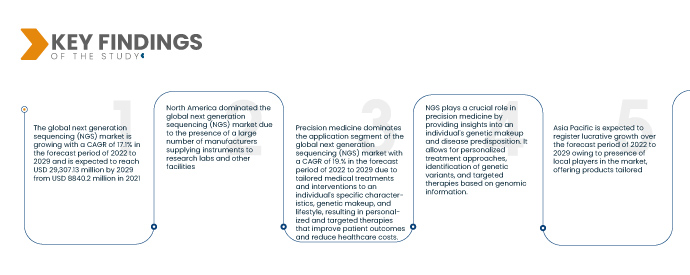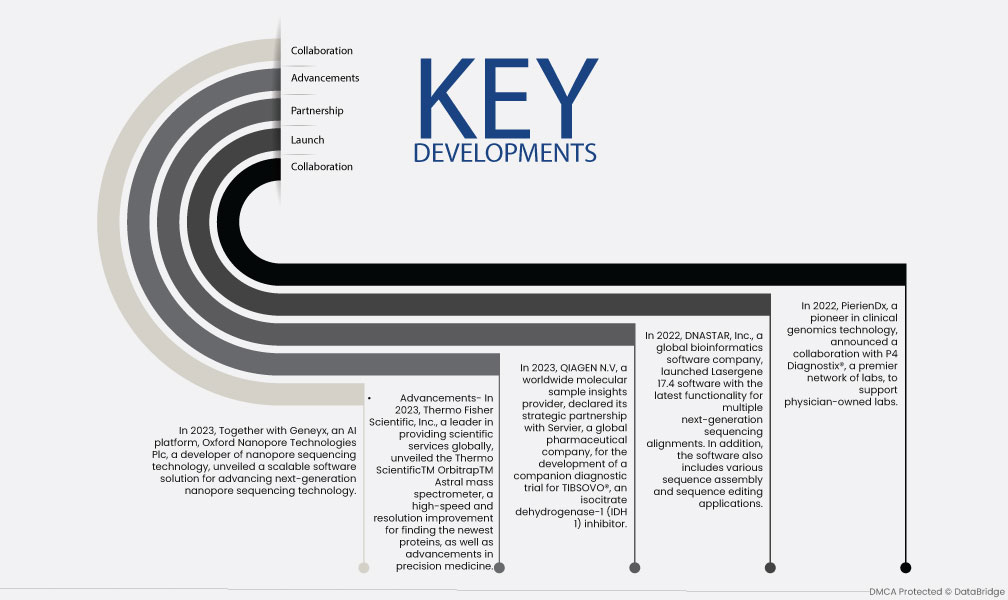The increasing adoption of genomic pharmacology is acting as a major driver for the global next generation sequencing (NGS) market, transforming the landscape of personalized medicine and targeted therapies. As healthcare providers recognize the value of tailoring treatments based on individual genetic profiles, the demand for high-throughput, accurate genomic sequencing has surged. NGS technologies enable comprehensive analysis of a patient's genome, allowing for precise identification of genetic variants that influence drug response, resistance, and potential adverse effects. This level of personalized insight guides clinicians in selecting the most in effect and safe treatments for each patient, improving outcomes and reducing trial-and-error prescribing. As a result, the NGS market is expanding rapidly, fueled by the growing adoption of genomic pharmacology across various medical fields and its potential to revolutionize patient care and outcomes.
Access full Report @ https://www.databridgemarketresearch.com/reports/global-next-generation-sequencing-ngs-market
Data Bridge Market Research analyzes that the Global Next Generation Sequencing (NGS) Market is growing with a CAGR of 15.1% in the forecast period of 2024 to 2031 and is expected to reach USD 40.78 billion by 2031 from USD 13.88 billion in 2023.
Key Findings of the Study
- Wide Product Portfolio Offered by Major Players
A wide product portfolio offered by market players is a key driver for the growth of the global next generation sequencing (NGS) market, as it provides customers with a comprehensive variety of solutions to meet diverse research and clinical needs. By offering a variety of NGS platforms, consumables, and software, market players can cater to different levels of research complexity, throughput requirements, and budgetary constraints. This versatility agrees researchers and clinicians to select the most appropriate tools for their specific applications, whether it's whole-genome sequencing, targeted sequencing, or transcriptome analysis. Additionally, a broad portfolio can include specialized offerings such as kits for cancer genomics, microbiome studies, and rare disease research, further appealing to a wide range of customers across academia, healthcare, and industry.
Report Scope and Market Segmentation
|
Report Metric
|
Details
|
|
Forecast Period
|
2024 to 2031
|
|
Base Year
|
2023
|
|
Historic Years
|
2022 (Customizable to 2016-2021)
|
|
Quantitative Units
|
Revenue in USD Billion
|
|
Segments Covered
|
Product & Service (Consumables, Services, and Instruments), Technology (Sequencing by Synthesis (SBS), Sequencing by Ligation (SBL), and Others), Application (Pharmaceuticals Microbiology, Drug & Biomarker Discovery, Diagnostics, Precision Medicine, Agricultural & Animal Research, Food Pathogen Screening and Others), End User (Pharmaceutical & Biotechnology Companies, Academic & Research Institutes, Hospitals & Clinics, Clinical Laboratories, Contract Research Organizations (CROS), and Others), Distribution Channel (Direct Tender, Retail Sales, and Others)
|
|
Countries Covered
|
U.S., Canada, and Mexico, U.K., Germany, France, Spain, Italy, Belgium, Russia, Switzerland, Netherlands, Turkey, rest of Europe, China, Australia, Japan, India, Singapore, South Korea, Malaysia, Thailand, Indonesia, Philippines, rest of Asia-Pacific, Brazil, Argentina, and rest of South America, South Africa, Egypt, Saudi Arabia, U.A.E., Israel, and rest of Middle East and Africa
|
|
Market Players Covered
|
Illumina, Inc. (U.S.), Thermo Fisher Scientific Inc. (U.S.), QIAGEN (Netherlands), Merck KGaA (Germany), Charles River Laboratories (U.S.), Revvity (U.S.), Promega Corporation. (U.S.), Agilent Technologies, Inc. (U.S.), Takara Bio Inc. (Japan), Eurofins Scientific (France), Hamilton Company (U.S.), BGI (China), Azenta US, Inc. (U.S.), Beckman Coulter, Inc. (U.S.), Bio-Rad Laboratories, Inc. (U.S.), PacBio. (U.S.), Macrogen, Inc. (South Korea), Gilson Incorporated (U.S.), New England Biolabs (U.S.), Oxford Nanopore Technologies plc. (U.K.), LGC Biosearch Technologies (U.K.), PCR Biosystems (U.K.), ACT Genomics (Taiwan), Quantabio (U.S.), DNASTAR (U.S.), and NimaGen. (Netherlands) among others
|
|
Data Points Covered in the Report
|
In addition to the insights on market scenarios such as market value, growth rate, segmentation, geographical coverage, and major players, the market reports curated by the Data Bridge Market Research also include depth expert analysis, patient epidemiology, pipeline analysis, pricing analysis, and regulatory framework
|
Segment Analysis
Global next generation sequencing (NGS) market is segmented into five notable segments based on product & service, technology, application, end user, and distribution channel.
- On the basis of product & service, the global next generation sequencing (NGS) market is segmented into consumables, services, and instruments
In 2024, the consumables segment is expected to dominate the Next Generation Sequencing (NGS) Market
In 2024, the consumables segment is expected to dominate the market with a market share of 52.00% due to its recurring nature of purchases, high volume usage, technological advancements, competition, and cost considerations.
- On the basis of technology, the global next generation sequencing (NGS) market is segmented into Sequencing by Synthesis (SBS), Sequencing by Ligation (SBL), and others
In 2024, the Sequencing by Synthesis (SBS) segment is expected to dominate the Next Generation Sequencing (NGS) Market
In 2024, the Sequencing by Synthesis (SBS) segment is expected to dominate the market with a market share of 62.25% due to its high accuracy, scalability, and compatibility with a variety of applications, making it a preferred choice for researchers and clinicians.
- On the basis of application, the global next generation sequencing (NGS) market is segmented into pharmaceuticals microbiology, drug & biomarker discovery, diagnostics, precision medicine, agricultural & animal research, food pathogen screening, and others. In 2024, the pharmaceuticals microbiology segment is expected to dominate the market with a market share of 35.19%
- On the basis of end user, the global next generation sequencing (NGS) market is segmented into pharmaceutical & biotechnology companies, academic & research institutes, hospitals & clinics, clinical laboratories, Contract Research Organizations (CROS), and others. In 2024, the pharmaceutical & biotechnology companies segment is expected to dominate the market with a market share of 41.42%
- On the basis of distribution channel, the global next generation sequencing (NGS) market is segmented into direct tender, retail sales, and others. In 2024, the direct tender segment is expected to dominate the market with a market share of 61.87%
Major Players
Data Bridge Market Research analyzes Illumina, Inc. (U.S.), Thermo Fisher Scientific Inc. (U.S.), QIAGEN (Netherlands), Merck KGaA (Germany), Charles River Laboratories (U.S.) as the major players operating in this market.
Market Developments
- In August 2021, Illumina Inc. announced that it has acquired GRAIL to accelerate patient access to multi cancer early detection test and gene sequencing procedures. This has helped the company to increase its product portfolio
- In October 2021, Thermo Fisher Scientific Inc. announced that it has launched Applied Biosystem QuantSudio Absolute Q-Digital PCR System, which is a designed to provide highly accurate results in genetic analysis. The digital PCR is already in use for monitoring cancer driven mutations in liquid biopsy. This has helped he company to increase its product portfolio
- In February 2024, QIAGEN announced that it has been recognized for its sustainability efforts by My Green Lab, a non-profit organization focused on promoting sustainability in scientific research. This will enhance QIAGEN's reputation for sustainability, potentially attracting environmentally conscious customers and partners
Regional Analysis
Geographically, the countries covered in the global next generation sequencing (NGS) market report are U.S., Canada, and Mexico, U.K., Germany, France, Spain, Italy, Belgium, Russia, Switzerland, Netherlands, Turkey, rest of Europe, China, Australia, Japan, India, Singapore, South Korea, Malaysia, Thailand, Indonesia, Philippines, rest of Asia-Pacific, Brazil, Argentina, and rest of South America, South Africa, Egypt, Saudi Arabia, U.A.E., Israel, and rest of Middle East and Africa.
As per Data Bridge Market Research analysis:
North America is expected to be the dominant and fastest growing region in the Next Generation Sequencing (NGS) Market
North America is expected to grow due to factors such as the presence of a huge number of key market players, high adoption of NGS technologies in research and clinical applications, and favorable government initiatives and funding supporting genomics research in the region.
For more detailed information about the Next Generation Sequencing (NGS) Market report, click here – https://www.databridgemarketresearch.com/reports/global-next-generation-sequencing-ngs-market
















